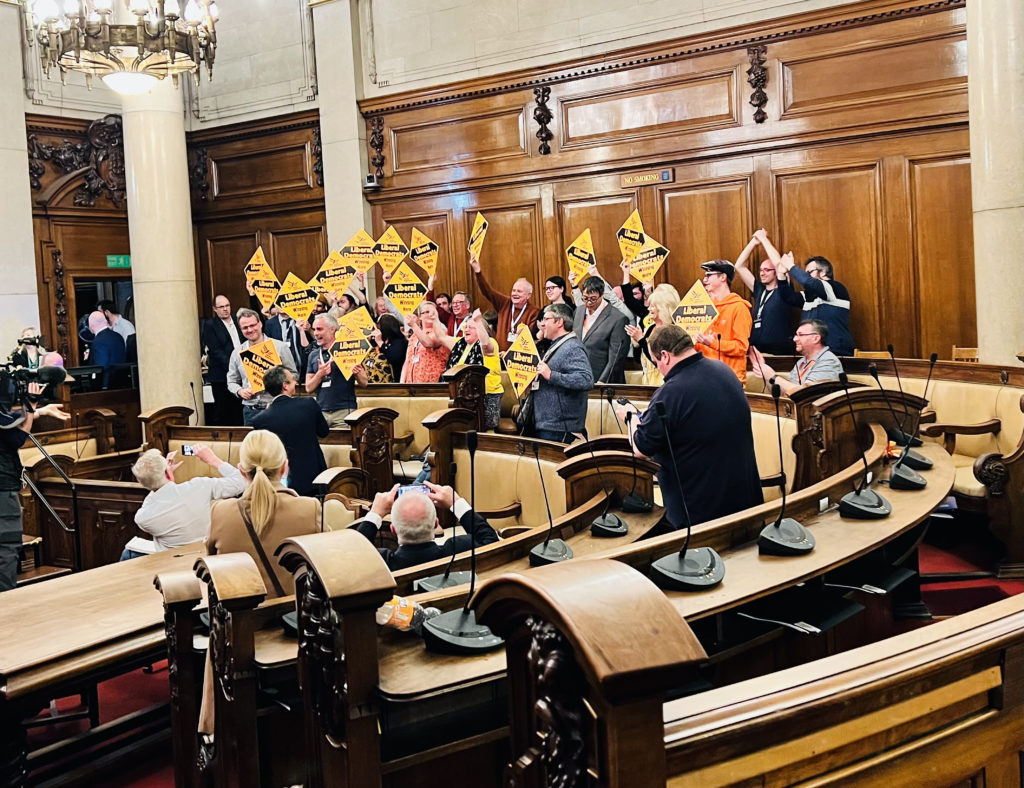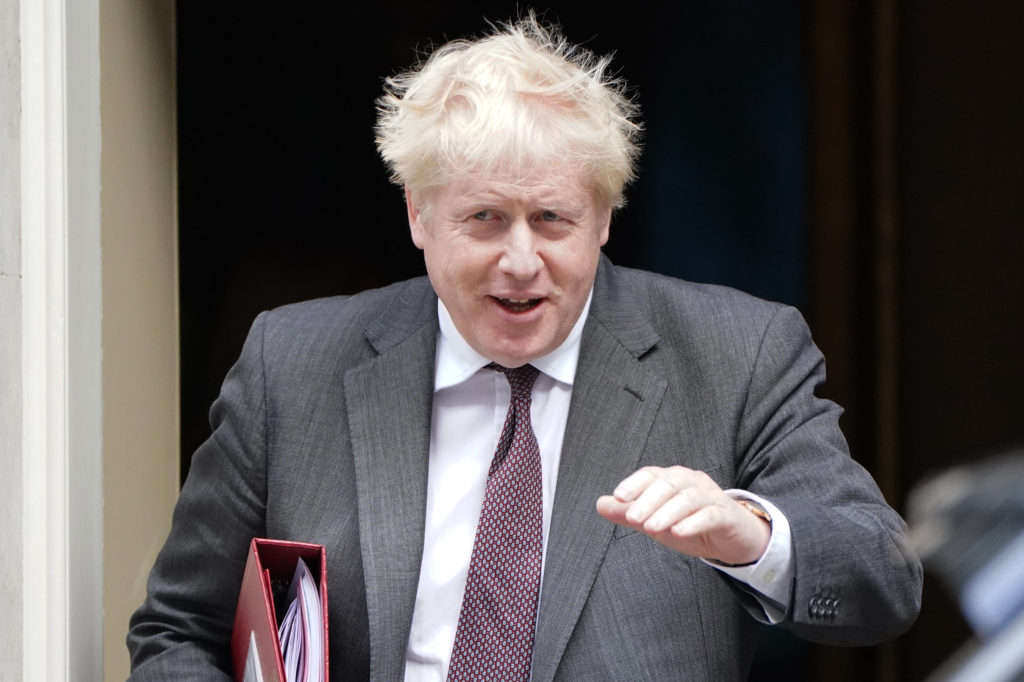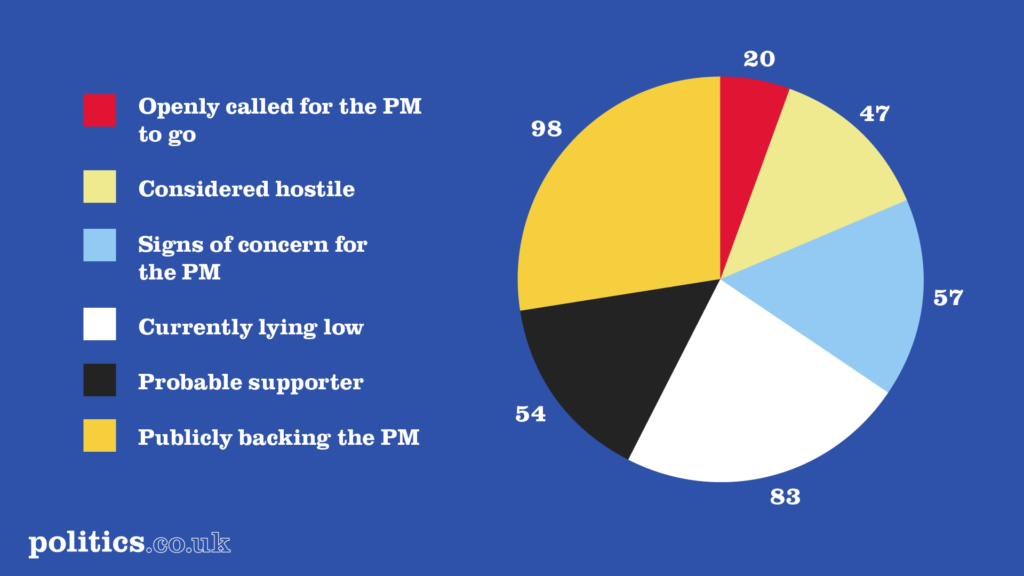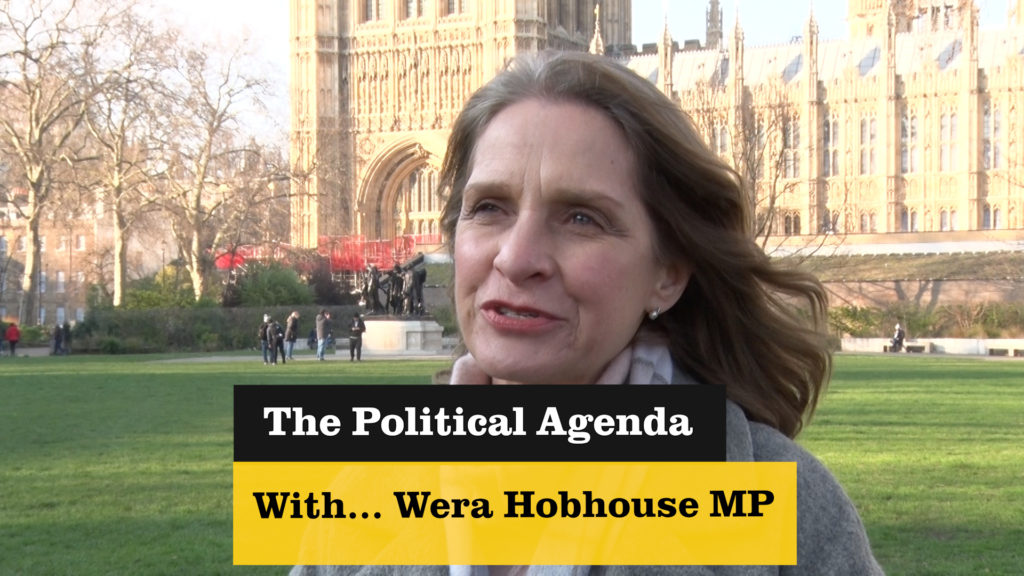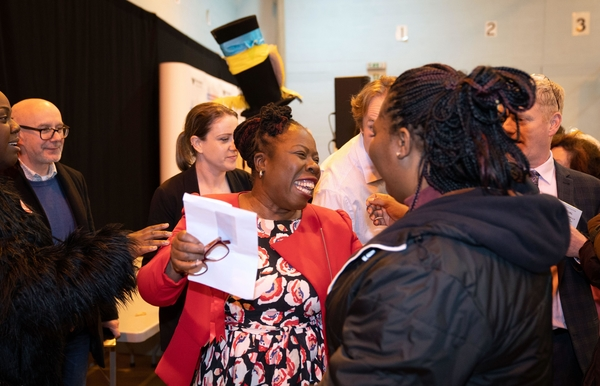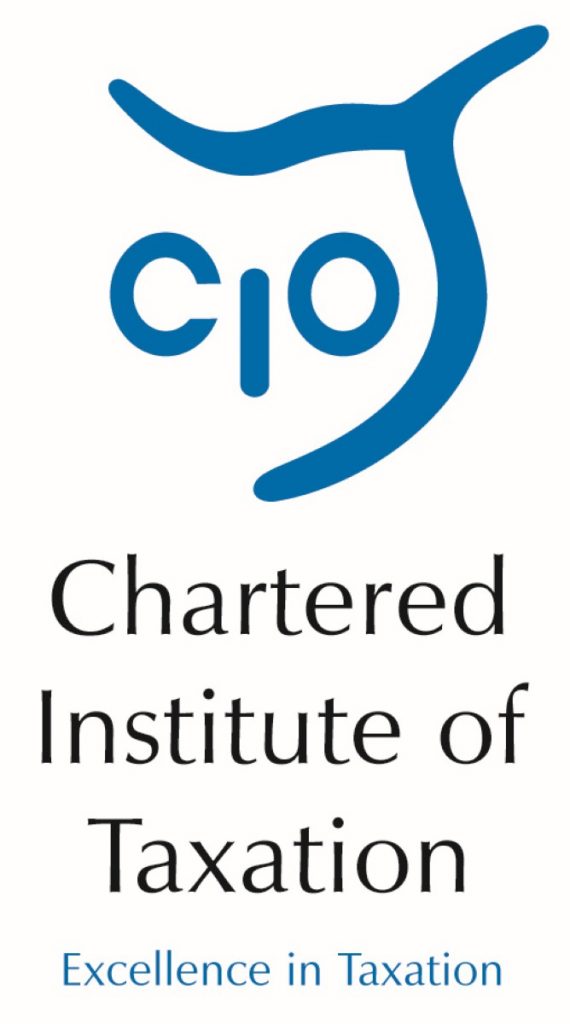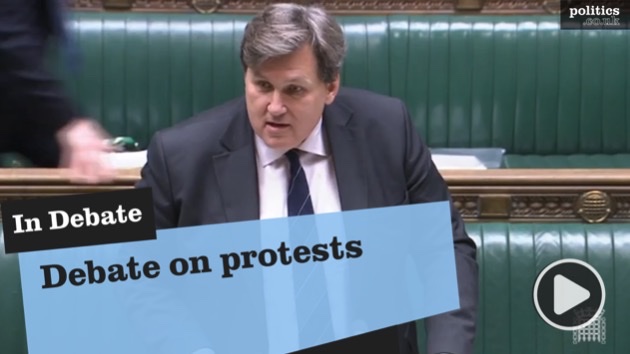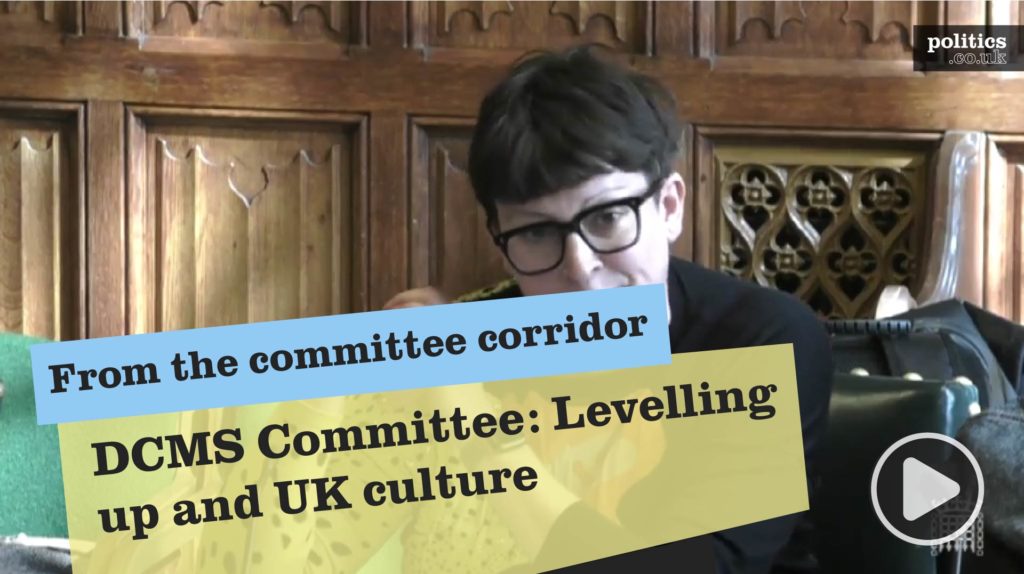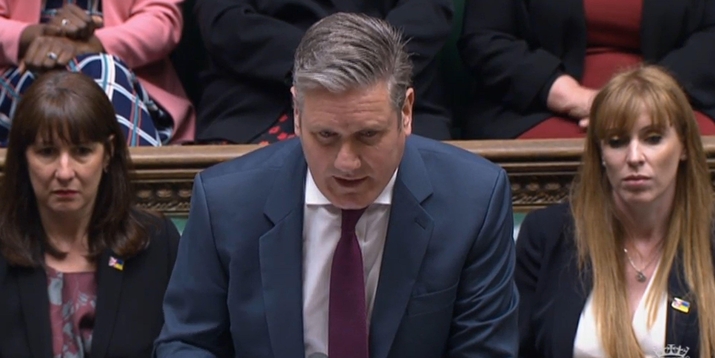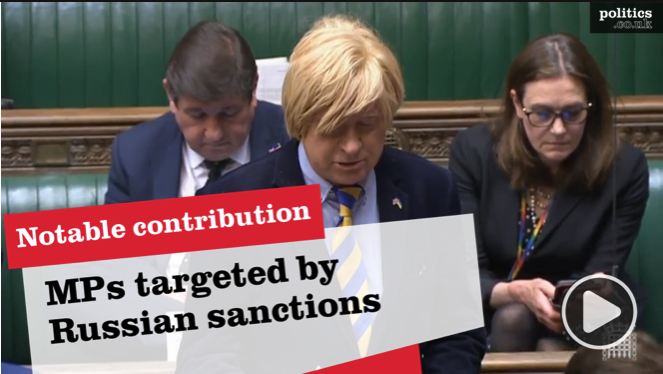29th April – The result of a General Election Today
The Labour lead over the Conservatives is currently trending at 5.9%. Polling averages extrapolated in the three weeks running up to April 29 place Labour on 39.6%, the Conservatives on 33.7%, and the Liberal Democrats on 9.4%.
Although Labour’s lead in the polls has dropped back from the 9.5% peak that it enjoyed in the period between mid January and mid February 2022, the party has maintained a steady lead of between 4%-6% across the last two months. Neither the Russian invasion of Ukraine on February 24, nor the issuing of a fixed penalty notice to the prime minister on April 12, have resulted in any notable effects on the opinion polls.

If a General Election was held today, and the public vote reflected the average polling position in the three weeks to April 29, this would likely lead to the following composition of the House of Commons:

The result of a general election is projected as a hung parliament with Labour some 22 seats short of a working majority at Westminster.
On the basis of the current polling position, Boris Johnson would narrowly lose his Uxbridge seat in the House of Commons.
Deputy Prime Minister, Dominic Raab, woukld also comfortably surrender his Esher and Walton seat to the Liberal Democrats. COP26 President, Alok Sharma, and Environment Secretary, George Eustice, would both lose their seats to Labour.
Although Labour’s lead in the national opinion polls has decreased since early February, the party’s likely standing at Westminster has been given a notable boost by tentative signs of a Labour revival in Scotland. With Labour now polling 9% higher in Scotland than in the 2019 General Eleciton, Labour is currently on course to gain 8 seats off the SNP. This would take Labour to 9 seats in Scotland, far short of the 40 plus mark that they enjoyed for much of the post war period, but nevertheless a notable change in trajectory.
Without a revival north of the border, Labour approach the next General Election, needing an opinion poll lead of around 12% over the Conservatives to be confident of winning an on outright majority at Westminster. The scale of this required lead, also reflects how in 2019, the Labour vote was disproportionately concentrated in already safe Labour seats (notably in England’s big cities).
The level of gains that Labour is able to make from the SNP in Scotland does significantly reduce the wider opinion poll lead that the party requires to win the next general election.
Despite showing signs of upward movement in January, support for the Liberal Democrats remains at around 9.5%. Despite making gains off the Conservatives in England, the party would likely now lose 2 of its seats in Scotland to the SNP. The SNP would also gain 3 seats from the Conservatives in Scotland.
Trend support for the Green Party remains at around the 5%-7% mark, slightly up from mid 2021.
Notable recent election polls
The current voting intention trend can be seen in the most recent individual polls:
YouGov (28 April) which placed Labour on 39%, the Conservatives on 33%, and the Liberal Democrts on 9%.
Redfield and Winton (24 April) which placed Labour on 42%, the Conservatives on 34%, and the Liberal Democrts on 11%.
Opinium (20 April) which placed Labour on 36%, the Conservatives on 34%, and the Liberal Democrts on 10%.
Public Opinion since the 2019 General Election
In the aftermath of the 2019 General Election, the Conservative party enjoyed a healthy lead in the opinion polls. With the Conservatives polling over 50%, this lead briefly surpassed 20% at the beginning of the Covid pandemic in March and April 2020.

In the latter part of 2020, the Conservative’s lead in the polls diminished significantly. Indeed between October 2020 and January 2021, the two major parties were running neck and neck.
However, coinciding with the roll out of the coronavirus vaccine and the conclusion of prime minister Boris Johnson’s Brexit deal at the end of 2020, the Conservative party once again opened up a significant election poll lead over Labour. The Tory lead over Labour was as high as 10% throughout April, May and June 2021.
This Conservative poll lead coincided with the unusual event of a governing party winning a seat from the Opposition, as occurred in the May 2021 Hartlepool by-election.
Entering the summer, levels of Conservative support took a sudden 3% hit following the resignation of then health secretary, Matt Hancock, in June 2021.
Coming into the autumn, the Conservatives appeared to have suffered no adverse polling impacts from either their proposed rise in national insurance, or the autumn fuel shortages. Indeed Conservative support appeared to have grown slightly after Rishi Sunak’s October 2021 budget.
The end of 2021, showed how quickly politics can change.
In early November 2021, the furore over the resignation of the Conservative MP Owen Patterson saw the trend Conservative vote share fall by a further 3%. Conservative support then fell by a further 6% as the first Downing Street party allegations emerged. This once again reaffirms how sleaze and scandal remain the most potent political weapons in British politics, ones which can quickly and easily cut through to voters.
Following a lull in political activity over Christmas 2021, the Conservatives appared to be recovering in early 2022, clawing back approximately half of the poll losses that they had seen before the festive period.
However in the aftermath of fresh ‘partygate’ allegations in Janaury 2022, followed by the publication of the Gray report in February 2022, the Conservatives dropped to their lowest polling position for over a quarter of a century, falling to a point last seen during the midst of the Major government back in the 1990s.
In late February 2022, and prior to the Russian invastion of Ukraine, there were some tentative signs that the Conservative position had recovered slightly from its early 2022 lows.
With the Russian invasion in Ukraine heavily dominating the UK news agenda since February 24, the position of the UK’s political parties has become somewhat becalmed with no notable movements in the polls in the last two months.
Pollsters show that Liberal Democrat voting intention during this Parliament has been constant at around the 9% mark, with the party failing to make any significant breakthroughs. Lib Dem support has though risen above 10% shortly after its by-election successes in Chesham and Amersham and North Shropshire.
General Election Polls – Methodology:
The above analysis of general election polls has been calculated through linear average equation modelling of the latest UK opinion polls of Westminster voting intention.
The headline data used in calculating these averages has been drawn from that laid out in the published polls of a number of leading firms: YouGov, Opinium, Survation, SavantaComRes, Redfield and Wilton, and Ipsos Mori.
In terms of translating these election poll findings into a projected make up of the current House of Commons, Politics.co.uk has used the Butler method to calculate the current swing between the parties compared to the 2019 General Election.
Given that the parliamentary results in Wales and Scotland are influenced by the existence of a fourth major party (Plaid and the SNP), Politics.co.uk has undertaken separate analysis for swings in Welsh and Scottish constituencies. This analysis has drawn on the latest opinion polls that were specific to Wales and Scotland respectively.
In the case of Scotland, Politics.co.uk drew on the most recent Scottish voting intention polling data from Survation on April 4. In the case of Wales, politics.co.uk drew on the latest opinion poll from YouGov of 20 December 2021. In the case of Northern Ireland, with its own political parties, Politics.co.uk has drawn on the LucidTalk opinion poll of 1 April.
In terms of specific adjustments then made to this analysis, Politics.co.uk has assumed that the Green MP Caroline Lucas would continue to hold her safe seat in Brighton Pavilion, and that Sir Lindsay Hoyle would be returned as Speaker for his constituency of Chorley.
Politics.co.uk’s current Westminster projections are also drawn through an aggregate extrapolation of the data on election polls. They do not factor in the potential for further additional regional or constituency centric swings.
Similarly, the above analysis has been conducted based on the existing United Kingdom constituency boundaries. The Boundary Commission is currently in the midst of a review designed to better equalise constituency sizes. Although these recommendations are yet to be finalized, the next General Election will almost certainly be fought on a redrawn constituency map.
The commission’s interim findings most notably increase the number of seats in the South East of England (+7), London (+3), East Anglia (+3), and the South West (+3), at the expense of Wales (-8), the West Midlands (-3), the North East -3), the North West of England (-3), and Scotland (-2). It has been suggested that equalising constituencies may assist the Conservatives by as many as 10 seats, given that the party’s seats in the south of England are currently numerically larger than those found elsewhere in the country.
https://pukdevelop.wpengine.com/news-feature/2022/02/10/the-house-of-boris-how-conservative-mps-now-line-up/
https://pukdevelop.wpengine.com/insight/2022/01/14/conservative-opinion-polling-collapse-how-did-we-get-here/
https://pukdevelop.wpengine.com/comment-analysis/2020/06/08/covid-unity-is-over-poll-analysis-shows-brits-retreating-into-political-tribes/
https://pukdevelop.wpengine.com/comment-analysis/2020/10/28/polling-deep-dive-shows-labour-taking-first-steps-towards-power/

